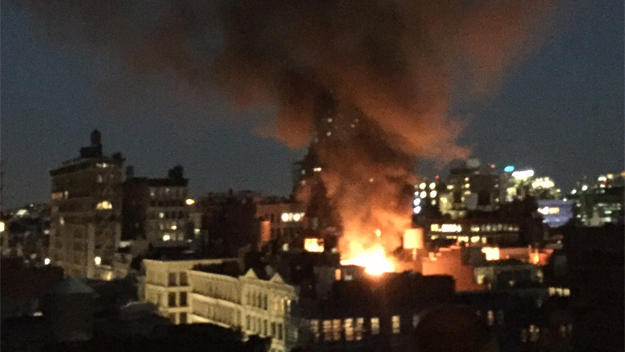The COVID-19 pandemic has impacted many aspects of city life. While there was early hope by many that the virus would fade with summer weather, New York is still operating under the state’s gradual NY Forward reopening plan to keep case numbers in check. New Yorkers have adapted in stride by taking advantage of the City’s Open Restaurants program to enjoy al fresco dining on our streets and sidewalks. And, like summers prior, many New Yorkers are shopping at the numerous air-conditioned retailers on SoHo Broadway to stay cool.
However, the air of uncertainty and upheaval brought by the pandemic remains pervasive. The historic heatwave of the past two weeks, which has seen temperatures nearing 100 degrees bake the city, has only added to city dwellers’ stress. This summer of oppressive heat amidst a global pandemic can bring to mind metaphors such as Dante’s Inferno; here in SoHo, comparing the neighborhood to a fiery hell isn’t a new phenomenon but harkens back to a more dangerous past reputation of the area.
Before SoHo was SoHo, the neighborhood bore the moniker of “Hell’s Hundred Acres.” Though the name implies a more sordid past, it actually came as a result of infrastructure rather than infamy. The name was given to the neighborhood by the NYC Fire Department; at the time, the cast-iron factories that had come to define the area were being left vacant and neglected, which in turn saw a number of fires across the neighborhood. A more fitting description of the fire-prone history of the neighborhood, and the characteristics that influenced this, can be found in a New York Times article from 2005:
The seedy manufacturing district, roughly from City Hall to Houston Street, included sweatshops, painting and plumbing concerns, and a good many firetraps. Doors nailed shut and an absence of sprinklers were common. Injuries finally subsided in the 1960’s as manufacturing left the city and enforcement was increased.
These days, as many come to SoHo to escape the heat, there is an irony considering how the cast-iron buildings were once seen as tinderboxes. Thankfully the residential and commercial loft conversion in the 1970’s helped to bring these buildings up to code, leaving the designation as Hell’s Hundred Acres a thing of the past. As Hell became ‘Ho, any memory of fire and heat has been relegated to temperatures on the streets, or kitchens of eateries in the SoHo or TriBeCa neighborhoods, as described in the Times:
Today the area is known as SoHo and TriBeCa, and the major fires can mostly be found in the grilling sections of upscale restaurants.
Image at top of page: 1958 fire on Wooster Street, when SoHo was known as “Hell’s Hundred Acres;” in this instance, 6 firefighters were killed attempting to put out the blaze. Photo courtesy of Ephemeral New York.
